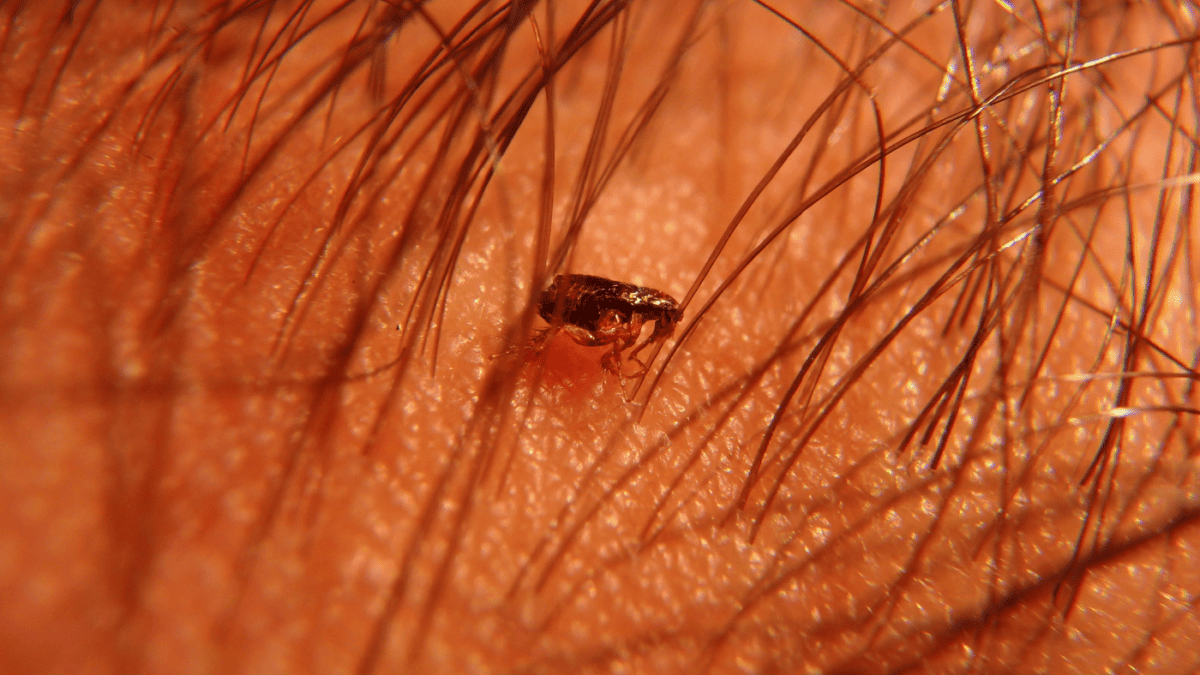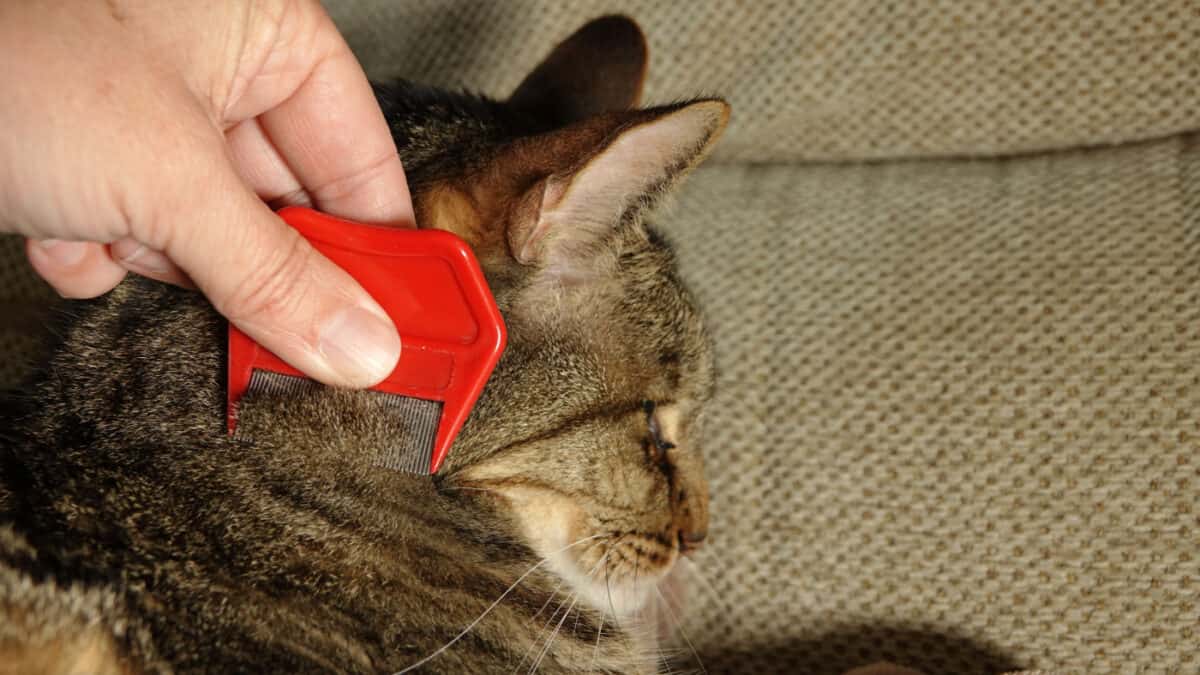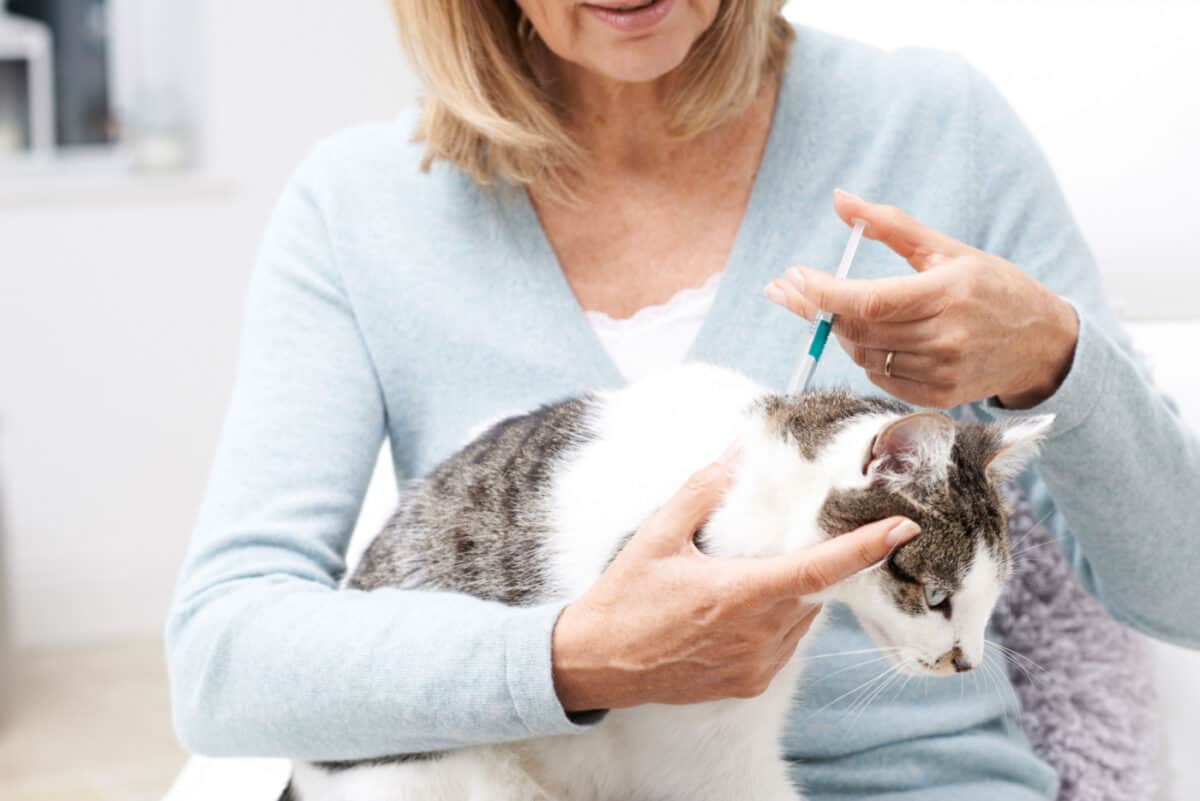Fleas are those annoying bugs that can make your cat's life miserable. If your cat goes outside or interacts with other animals, chances are you've dealt with these persistent pests. They can multiply quickly and cause a big problem.
Cat fleas are particularly harmful to your furry friend. Even a single flea bite can trigger allergic reactions and make your cat itchy and uncomfortable. Fleas can also give your cat tapeworms and put their health at risk.
Kittens and sick cats are especially vulnerable to fleas. If left untreated, fleas can cause severe anemia and even lead to death.
To fight back, it's important to understand how fleas behave.
In this article, we uncover the secrets of cat fleas and share practical tips to protect your cat. Learn about their life cycle, how to spot them, and effective treatment options.
Say goodbye to the itching and keep your cat safe and happy. It's time to take control of the cat flea problem.

Know The Enemy - Cat Fleas
Fleas are blood-sucking parasites, small in size, and adaptable to specific hosts. Among the various species, the cat flea, scientifically known as Ctenocephalides felis, dominates modern homes. Cats remain their preferred hosts, but these fleas won't hesitate to feast on humans, dogs, or other animals.
The flea life cycle encompasses four stages. An adult female flea lays thousands of eggs during her lifetime, with an astonishing rate of up to 50 eggs per day. These eggs usually detach from the host and undergo hatching, transforming into larvae.
Flea larvae thrive in warm, dark places like carpets and soft furnishings, feasting on flea droppings for several days. They later encase themselves in small cocoons, where they undergo metamorphosis and emerge as adult fleas.
Adult fleas remain dormant within their cocoons for weeks, eagerly awaiting a potential host. Triggered by heat, movement, and the exhaled carbon dioxide of passing creatures, they emerge from their silky shells, leaping onto animals or humans in their vicinity.
Detecting fleas on your cat can be challenging. These clever pests prefer the dark recesses of your cat's coat, making them difficult to spot. While parting your cat's hair might reveal a fleeting glimpse of a flea scurrying away, you're more likely to notice tiny black specks, especially on white cats.
A quick wipe with a wet tissue will reveal their true nature - small red dots formed from flea feces, which consist of dry, digested blood.

Treating The Problem - Effective Treatments For Flea Control
Dealing with fleas goes beyond addressing the ones on your cat; you must also target the flea population in your home.
Regularly vacuum your house, paying special attention to carpets and upholstery. Fleas often spring to life after vacuuming due to vibrations, hiding inside the vacuum bag. Seal and dispose of the bag promptly to prevent their return.
For severe flea infestations, seek professional help from an exterminator and use specialized anti-flea products in your home. Ensure these products are safe for your cat, avoiding any toxic substances.
When it comes to treating your cat, numerous safe and effective products are available.
Consult your vet for options like oral medications such as Program or topical solutions like Advantage Flea Control for Cats or Frontline Plus Flea and Tick Control. These products disrupt different stages of the flea life cycle, offering reliable protection.
There are other products, such as drops, sprays, collars, and shampoos, that can be used to fight fleas. While cheaper and available over the counter, many of these are either not safe enough or simply ineffective.
Essential Preventive Measures To Keep Cat Fleas At Bay
Prevention Is Key
To protect your cat from the misery of fleas, implementing preventive measures is crucial. By following these simple yet effective strategies, you can minimize the risk of flea infestations and create a safe haven for your feline companion.
SIGN UP FOR THECATSITE'S EMAIL UPDATES >
Regular Vacuuming And Proper Disposal
Regularly vacuum your house, giving special attention to carpets and upholstery where fleas often lurk. Vacuuming helps remove adult fleas, eggs, and larvae from the environment.
However, be aware that fleas can spring back to life after vacuuming due to vibrations. To prevent their return, promptly seal and dispose of the vacuum bag in a secure trash container.
Maintaining A Clean Living Environment
Maintaining cleanliness in your cat's living environment plays a significant role in flea prevention. Regularly wash your cat's bedding in hot water to eliminate any fleas, eggs, or larvae that may be present.
Additionally, vacuum the areas where your cat spends time, such as furniture and carpeted surfaces, to remove any potential hiding spots for fleas. This practice helps disrupt the flea life cycle and reduces the chances of infestation.
Avoiding Infested Areas And Animal Contact
Minimize your cat's exposure to known infested areas and other animals that may carry fleas. If your cat socializes with outdoor cats or animals, it's essential to be cautious.
Fleas can easily transfer from one animal to another, leading to an infestation in your home. Consider using flea prevention measures more consistently in such situations.
By limiting contact with infested areas and other animals, you can significantly reduce the likelihood of your cat bringing fleas home.
By incorporating these preventive measures into your routine, you create a hostile environment for fleas, making it difficult for them to establish and thrive.
Consistency and vigilance in maintaining a clean and flea-free living space for your cat are key to their well-being and happiness.

Professional Extermination
For severe flea infestations, it's advisable to seek professional help from an exterminator. They have the expertise and specialized treatments to eradicate fleas from your home effectively.
Professional exterminators can assess the extent of the infestation, identify the areas of the highest flea activity, and apply targeted treatments to eliminate fleas at all life stages. Their services ensure thorough extermination and help prevent future infestations.
Protecting Your Cat From Fleas For A Happy Feline
In this article, we learned that fleas can make your cat miserable. They quickly multiply and pose serious health risks. Cat fleas, in particular, cause allergies and itchiness and transmit tapeworms. Vulnerable kittens and sick cats can suffer from severe anemia and even death if left untreated.
Understanding flea behavior was key. We explored their life cycle, spotting techniques, and effective treatments.
Prevention was crucial: regular vacuuming, cleanliness, and minimizing contact with infested areas and animals.
For severe infestations, professional extermination was recommended.
Consulting your vet for safe flea treatments disrupts the flea life cycle.
Say goodbye to fleas and ensure your cat's happiness. Protect their well-being.
SIGN UP FOR THECATSITE'S EMAIL UPDATES >
Comments? Leave them using the comment section below. Questions? Please use the cat forums for those!
You might also like:
Treating Fleas In Kittens Made Easy: Practical Solutions For Pet Owners
How Does Frontline Work On Cats?
Note: We may get commissions for purchases made through links on this page.


![Ringworm in a cat, How to deal with ringworm in cats [Inc. The Housecleaning Regime]](https://thecatsite.com/c/wp-content/uploads/2014/09/ringworm-260x170.jpeg)


17 comments on “Cat Fleas – The Silent Threat To Your Cat”